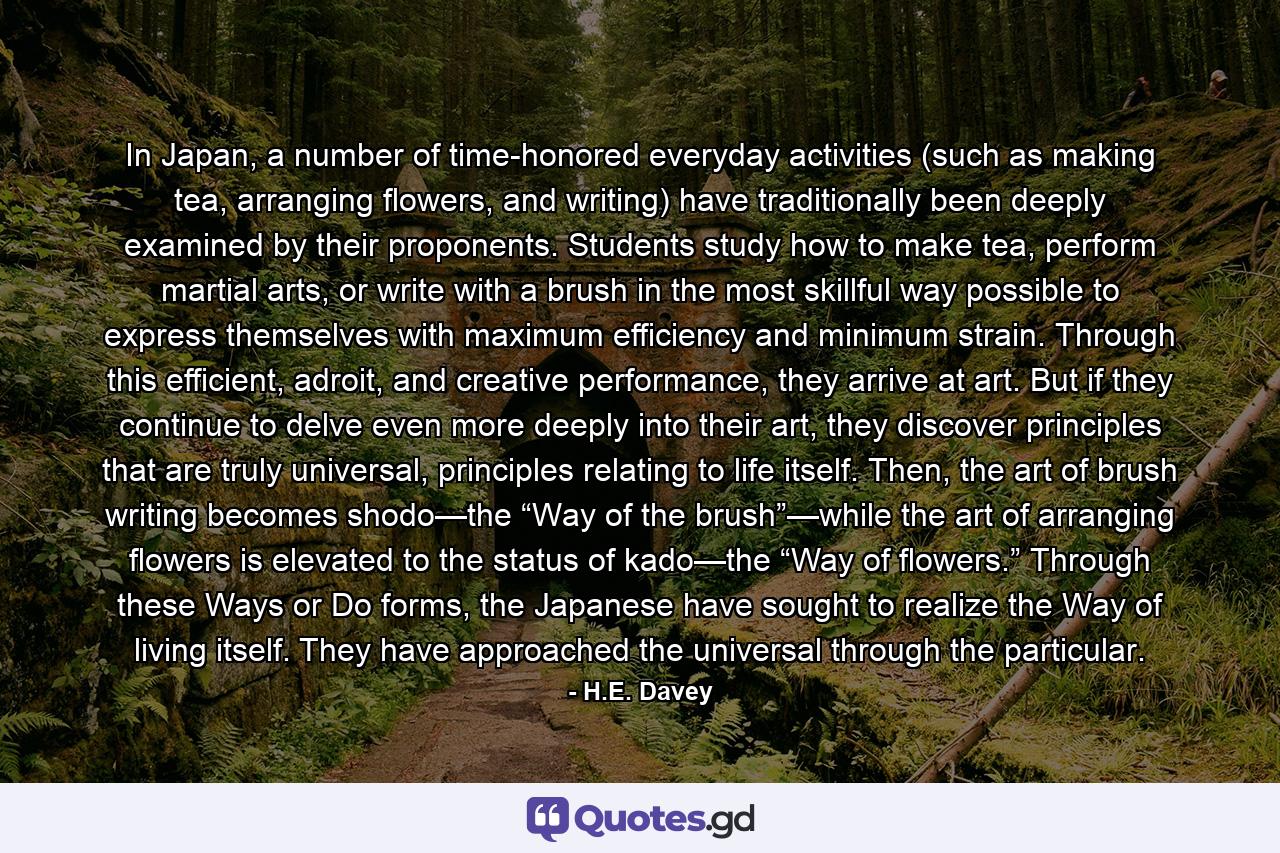In Japan, a number of time-honored everyday activities (such as making tea, arranging flowers, and writing) have traditionally been deeply examined by their proponents. Students study how to make tea, perform martial arts, or write with a brush in the most skillful way possible to express themselves with maximum efficiency and minimum strain. Through this efficient, adroit, and creative performance, they arrive at art. But if they continue to delve even more deeply into their art, they discover principles that are truly universal, principles relating to life itself. Then, the art of brush writing becomes shodo—the “Way of the brush”—while the art of arranging flowers is elevated to the status of kado—the “Way of flowers.” Through these Ways or Do forms, the Japanese have sought to realize the Way of living itself. They have approached the universal through the particular.
